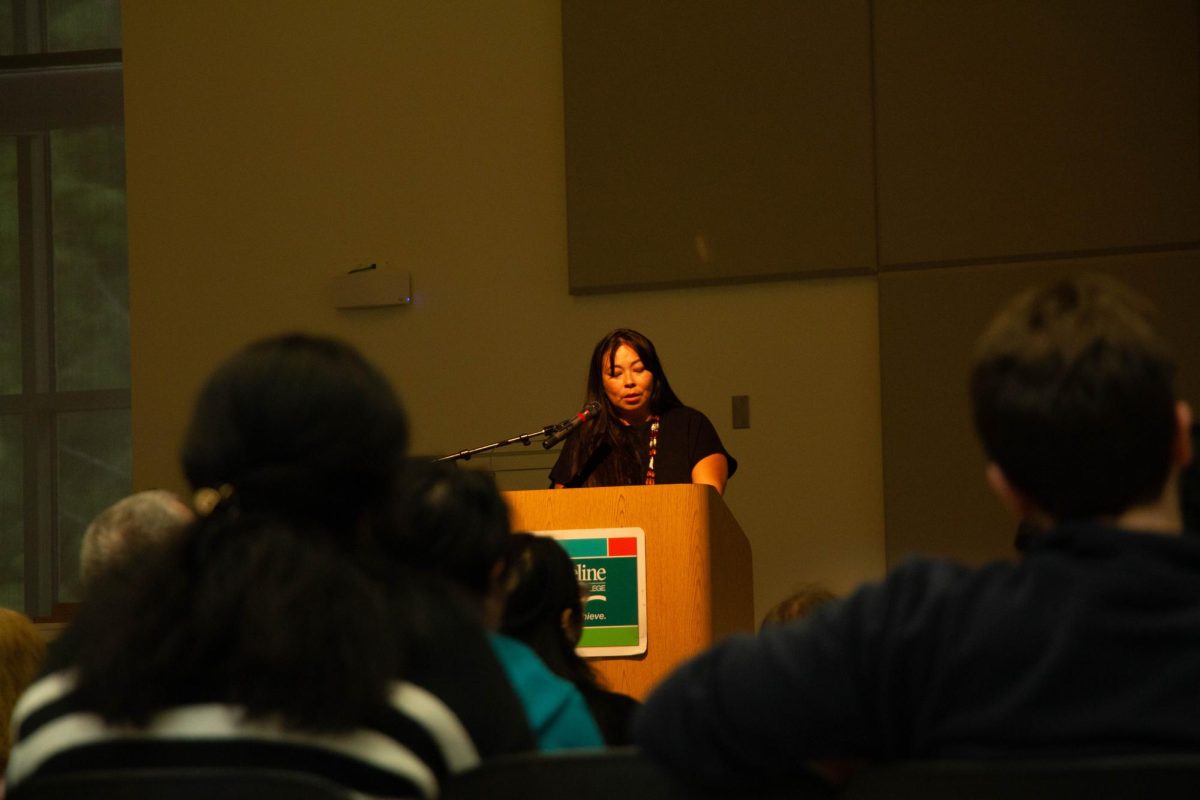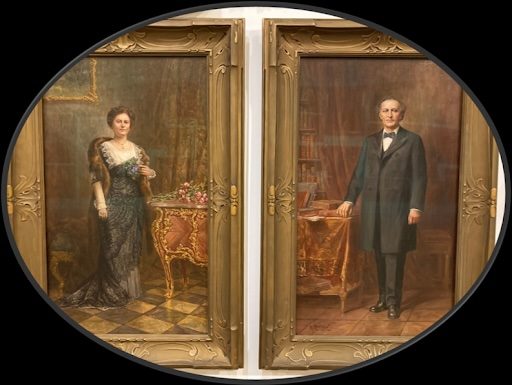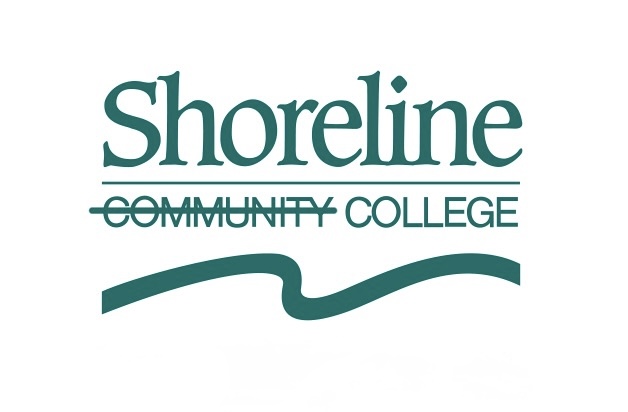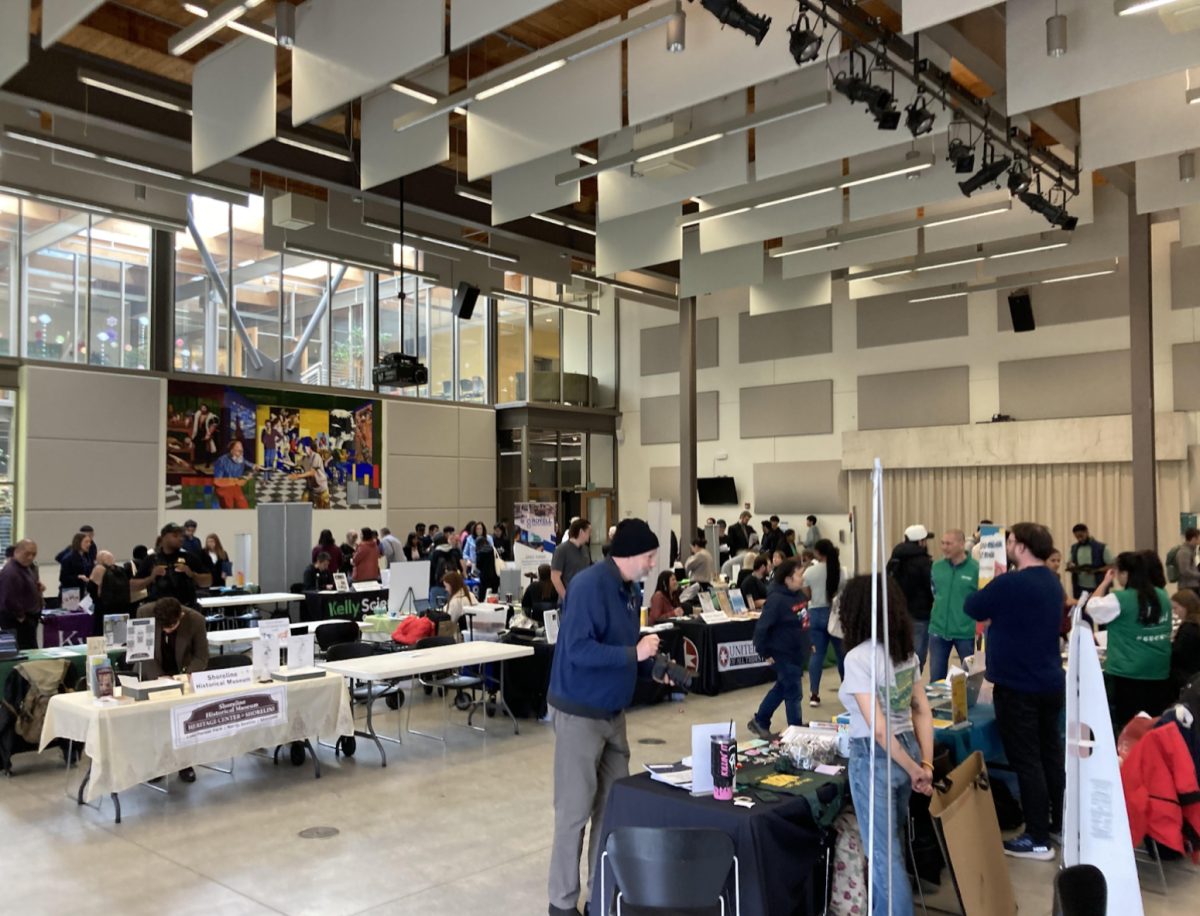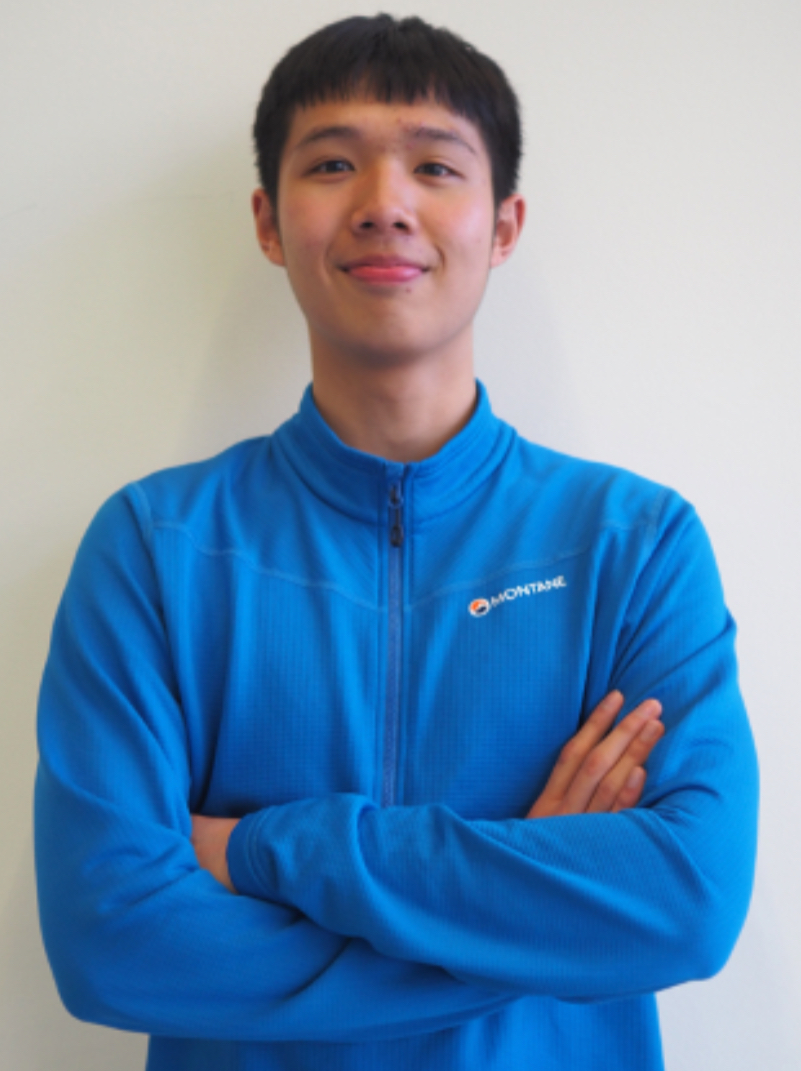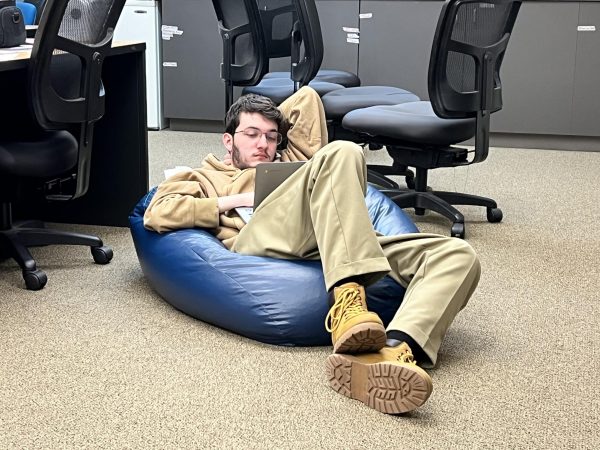For weeks the intermediate and advanced photography students had been anticipating the presentation that Matika Wilbur, a prestigious photographer, was coming to campus to give. About an hour before the event student volunteers began to set up some of her works in front of the PUB main dining room soon after caterers from the restaurant Off the Rez began to set up the food — cinnamon sugar and lemon curd sweet frybread — for the attendees of the event. Soon after Wilbur arrived on campus, her husband set up a table to sell her book as well as t-shirts and hats. Shortly afterwards Wilbur appeared and started signing the books of people who had arrived early to the event. After 6:30 p.m. Wilbur began her presentation.
Wilbur came to the stage adorning tribal jewelry; cup of coffee in hand. With high cheekbones, bright eyes, and a seemingly permanent smile, she addressed the crowd, “Hahaha, Hello! Gee, what an introduction, after all that, like, she better be fancy, hahah.” This humble turn of phrase followed her introduction which listed her many accolades as a National Geographic explorer, author, podcaster, and keynote speaker who has given talks at Yale, Harvard, Berkeley, Google, and TED.
In many ways having Wilbur return to speak aligns with the greater push by school administration to provide a venue for a diversity of voices as part of our Equity-Centered Strategic Plan. With initiatives like these coming to the forefront in educational institutions and the cultural consciousness it gives room for the revitalization of stories that have unjustly taken a back seat for far too long. With Wilbur’s loud, energetic, comedic, down to earth and empathic way of addressing the crowd, it was hard not to listen as she delved into the lives of her tribal family.
She addressed SCC president Dr. Jack Kahn, directly multiple times. Poking fun at the notion of being able to pay for school tuition through the “offering [of] tobacco,” a culturally-significant way of establishing a binding agreement. This method was used by Leon, one of many of the Native American lives cataloged in her book, to gain acceptance to a community college to further his education. His journey eventually led to him becoming a lawyer who worked with Dr. King on civil rights issues. Along with this, Leon was also an instrumental part in establishing the first American Indian Center in the U.S.
Later in the night she gave Dr. Kahn a bit of side eye while delving into the role of clan mothers who not only “choose chiefs” but had the ability to “revoke chieftainship”. Wilbur, in jest, stated “Imagine if we could be like, yeah, no, I don’t think so prezzy. The women have decided that you’re just not doing it right.” Dr. Kahn gracefully acknowledged these comments in good faith and humor. There was a heavy focus throughout Wilbur’s talk on decolonizing, or rather “indigenizing”, our way of thinking at every level. Wilbur even urged students to research her guide on decolonizing the syllabus and put it in front of educators, if so inclined. However, the bulk of her work was focused on changing the way that we see native people and Native American culture.
Halfway through her talk she went into an exploration of the way that Native Americans are barbarically portrayed in the media. Given that Native Americans make up “less than one percent” of students in higher institutions and are marginalized on reservations, this could be the only exposure to native identity the majority of non-native Americans encounter throughout their lifetime.
This was the impetus for Wilbur’s book, Project 562, a book dedicated to “chang[ing] the way we see Native America,” through the telling of stories from the 562 federally-recognized Native American tribes within the United States. “After a decade of doing narrative correctional work, what I believe to be true is the way that native people see ourselves affects the way that we treat ourselves,” Wilbur said. The self-esteem of Native American people under the age of 20 drops “some 65%” when confronted by typical “insipid… one-dimensional” stereotypes, while the same images raise the self-esteem of their white counterparts. This drop in self-esteem isn’t temporary or to be taken lightly. This degradation is chronic and ingrains itself into the identity of an entire population.

The impact of these types of portrayals is drastically felt within the adolescent native community. Before maturation it is difficult to see beyond what is claimed by society and commonly espoused beliefs are taken as simple truth. This can be profoundly detrimental to native youths when consuming a narrative in which their social identity is not only seen as lesser but in many ways subhuman. What has to be done to reject the outwardly imposed title of “savage”?
“As adults we know about systemic issues, we can teach things such as critical race theory in our classrooms and our societies. We know how to name colonization, settler colonialism, and we know how to begin pushing back against some of the systemic oppression. But it doesn’t stop the way that we internalize it in our bodies. In the way that we imagine ourselves, in the way we imagine a future for ourselves,” said Wilbur.
These issues impeded the youth that she became close with while teaching on a reservation. Wilbur said, “There was a lot of death. Too much unnatural death. In the five years that I was teaching I had to bury 19 of my own students… I can remember the next day sitting in lodges with my fellow teachers… we’d be down on our knees begging the Creator to help us. What are we doing wrong? What should we be doing differently? Help us Creator. Feeling so small and insignificant like all the work we were doing didn’t matter.”
The work to reimagine native identity emanated from the reservation and into the classroom where it would later have a greater impact on the culture. Wilbur strives to create pride within the Native American community and pass on many of the forgotten teachings to the people that stand on the land where they were originally created.
Wilbur faced her own challenges when entering the realm of higher education, “You had to walk in two worlds. It was always the native world that was in the back seat because to be successful, it had to be the western world [first] then you were allowed to be native after. But I would really like it to be the other way around. I want our kids to feel free enough for it to be native first. Philosophically, emotionally, functionally, linguistically, and then if they want to walk and live and prosper in the western world they can if they so choose but they can do it from a native perspective.” Important values that were lost ranged from a kinship to the land, a kinship to each other, a focus on matriarchal hierarchy, a respect for elders, and community that more honestly resembled loving democracy. “When the original forefathers came and were modeling themselves after our original Haudenosaunee democracy they left out the most important part. Which was women choosing,” she said.
Through the shaping of thought of a new generation we can transform the way not only Native Americans are treated but how we treat each other as people. “What is the radical reimagination of education to defeat these systemic monsters? What does it mean to indigenize the settler colonial institution? What does it mean to support our Native American students in very real and meaningful ways,” asked Wilbur when addressing these issues in an interview with Tommy Porter; the founder of the Freedom School (a Native American language immersion school in New York).
“What is it that we need in school for our native kids to feel safe?” she asked. Translated, the answer was: The Great Big Love. The Great Big Love is meant to represent a familial type of love, one that a mother would feel for her baby. A type of care, guidance, and acceptance that the school seeks to offer to their children. “We want our students to feel like kin… that relationship doesn’t end when they leave these doors, that relationship is always here for them,” Porter said. In many ways she exemplified the greater theme of the talk itself. Through a community that feels more like family we could lift each other up and put an end to a needless power struggle that has engulfed humanity for hundreds of years.
Louise Herne, a clan mother associated with the Freedom School, recounted to Wilbur that “The work of colonization was the erasure of love from our communities. The manifestation of decolonization is love.”
Check out Wilbur’s podcast, all my relations, at the All My Relations Podcast website.
Her book, Project 562, can be purchased at the Project 562 website.
.


